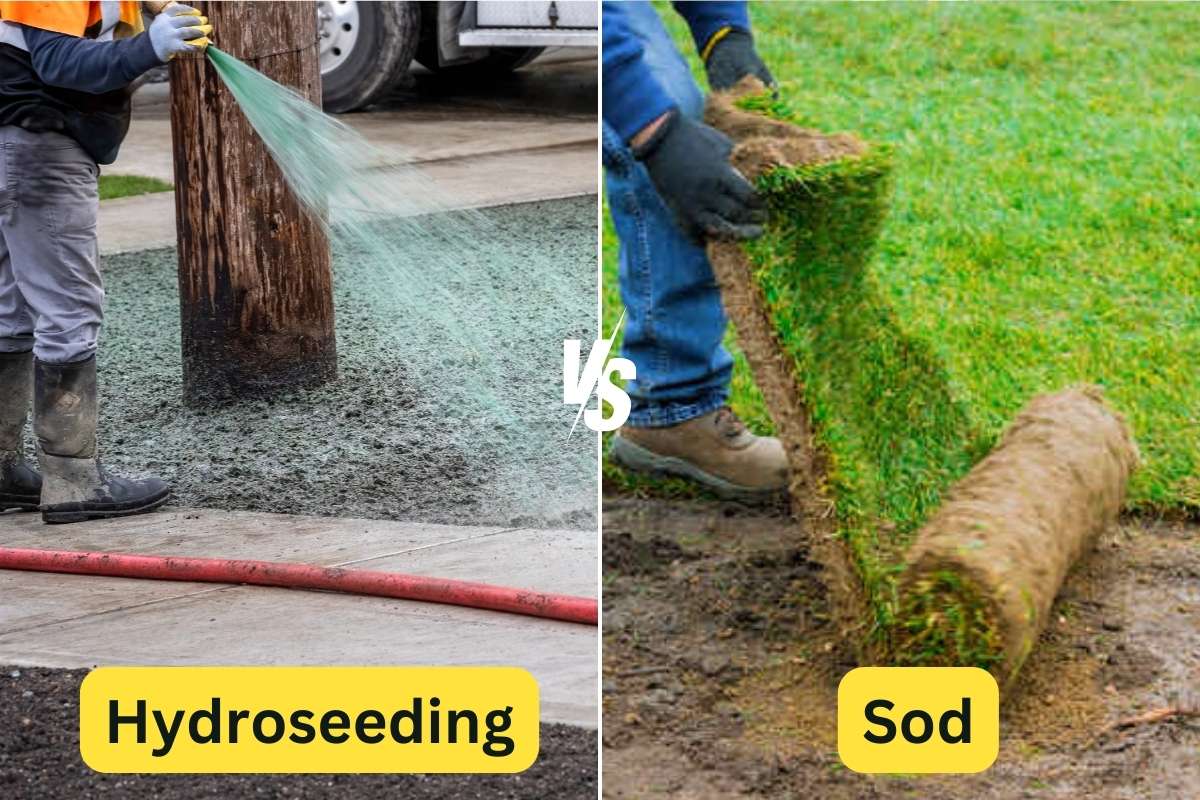
Choosing the right type of grass planting method for your lawn is crucial for creating an outdoor space you love. While sod offers an instant lawn, hydroseeding is a more cost-effective solution for large areas.
Both methods have their own benefits and can transform your landscape, but the best choice depends on your needs and circumstances. We’ll explore how hydroseeding and sod work, their benefits, and the situations in which one might be better than the other.
Key Takeaways:
- Hydroseeding is more economical for large areas but takes 4-6 weeks to produce a lawn that’s ready to mow.
- Sod offers an “instant lawn,” but due to its higher costs, it’s better suited for small lawns.
Hydroseeding vs. Sod
When deciding between hydroseeding and sod for your lawn, several factors come into play. Both methods have their merits, but your choice will depend on your specific needs. Here are some of the factors to consider:
| Factor | Hydroseeding | Sod |
| Time for Establishment | Around 5-10 days to germinate and 4-6 weeks to be ready for its first mow | Around 2 weeks to knit with the soil and a month to establish, but you’ll have a full lawn upon installation |
| Appearance | Starts as sprayed mulch, takes time to become a green lawn, but will look more uniform once established | An immediate lush green lawn, but it can have seams that give your lawn an artificial look |
| Long-Term Care | Frequent initial watering, generally fewer maintenance demands once established | Intensive early watering, maintenance needed to establish |
| Suitability to Soil and Climate | Customizable seed mix, adapts well to local conditions | Sensitive to local soil and climate, needs careful matching |
| Costs | Cheaper | More expensive |
What is Hydroseeding?
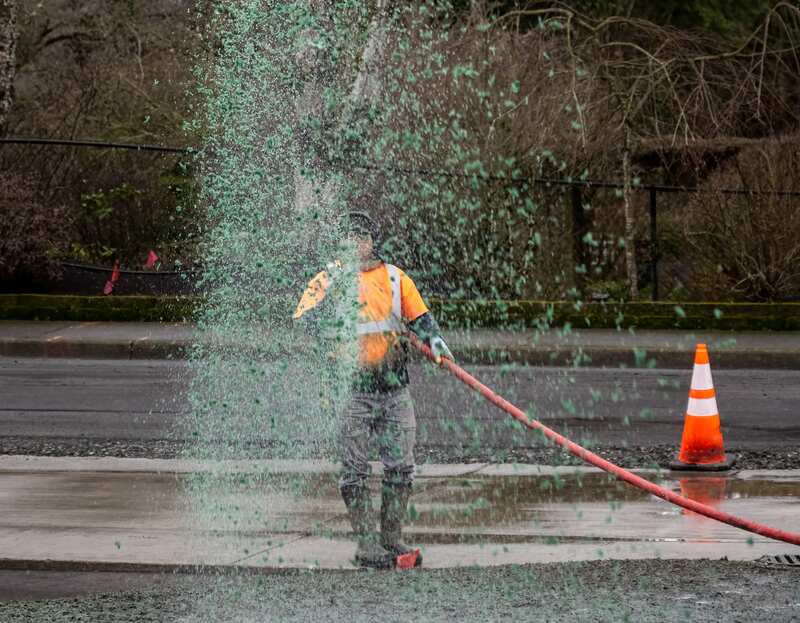
Hydroseeding is a seeding process that uses a slurry of seed, mulch, fertilizer, and water sprayed onto prepared soil. This method is effective for growing new lawns or repairing existing ones and is chosen for its efficiency and adaptability.
See Related: What is Hydroseeding?
How to Hydroseed a Lawn
The hydroseeding process begins with soil preparation, which includes clearing debris and leveling the ground. Then, the slurry mixture is evenly sprayed over the soil, providing a nutrient-rich environment that promotes rapid seed germination.
See Related: DIY Hydroseeding Guide
Pros and Cons of Hydroseeding
Hydroseeding offers several advantages for lawn establishment but also some limitations:
| Pros | Cons |
| ✓ Costs less than sod, making it economical for large lawns | ✗ Does not provide an instant lawn, as the grass needs time to grow |
| ✓ Seeds germinate quickly, showing growth within a few weeks | ✗ Requires constant watering, especially in the initial growth stages |
| ✓ Allows for a customized grass mixture, tailored to your specific needs | ✗ Vulnerable to erosion if exposed to heavy rain soon after application |
| ✓ Promotes even seed distribution, reducing the chances of uneven growth | ✗ Less effective during extreme weather conditions |
| ✗ May replace native shrubs with grasslands, increasing future fire risks |
See Related: Benefits of Hydroseeding.
What is Sod?
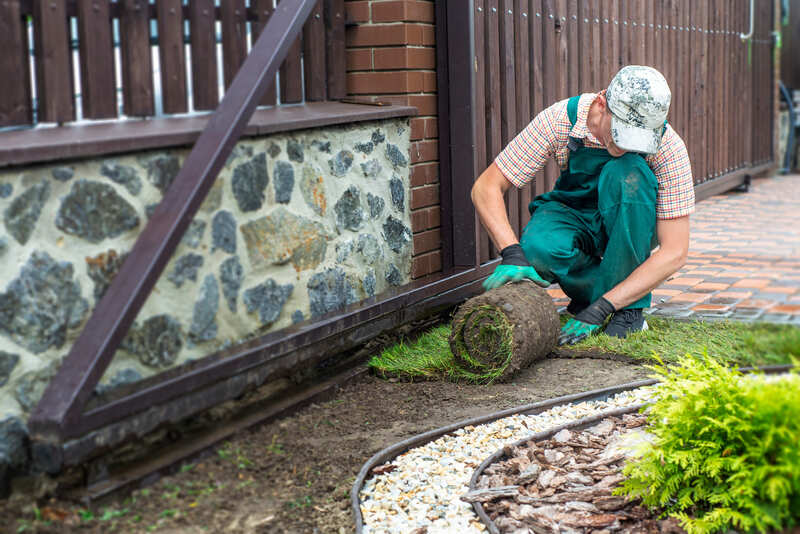
Sod, also known as turf, is pre-grown grass that is harvested with a layer of soil and roots which comes in rolls or squares. This ready-to-lay grass provides an immediate lawn, which is why it’s popular among homeowners who want quick results.
See Related: The Best Types of Sod for Your Lawn
How to Install Sod
Installing sod involves preparing the ground by clearing weeds and leveling the soil, then laying the sod strips tightly together so they can knit into the existing soil.
See Related: How to Lay Sod: A Step-by-Step Guide
Pros and Cons of Installing Sod
Choosing sod for your lawn offers several benefits but also some potential drawbacks. Here are some of them:
| Pros | Cons |
| ✓ Creates an instant lawn, immediately improving your outdoor space | ✗ Higher cost compared to hydroseeding, especially for larger areas |
| ✓ Prevents soil erosion | ✗ Requires significant amounts of water to establish |
| ✓ Establishes a healthy lawn quickly, useful in areas prone to mud and dust | ✗ Limited variety of grass types available, which may not suit all climates or soil conditions |
Hydroseeding vs. Sod Costs
When planning to establish a new lawn, cost is a significant factor. Both hydroseeding and sod installation have varying expenses based on several factors. Here’s a breakdown of what you can expect to pay for each option.
Hydroseeding Costs
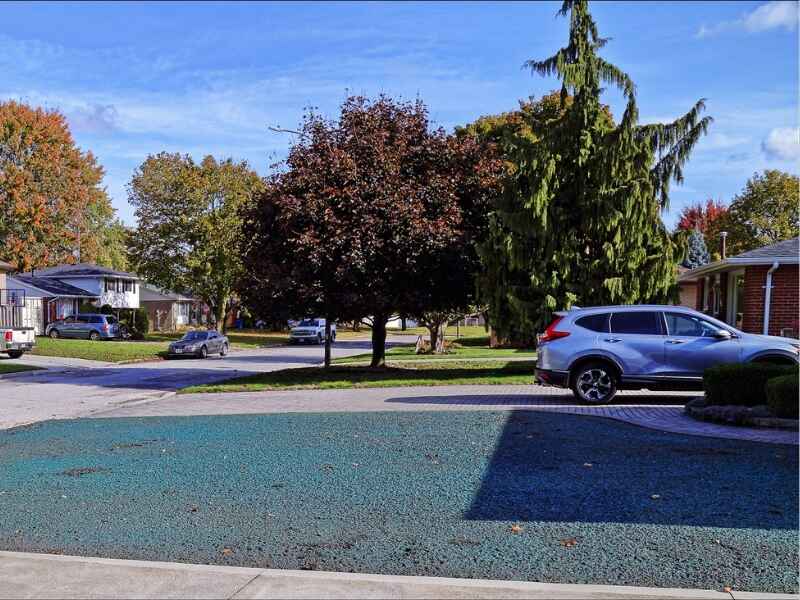
Hydroseeding is often more budget-friendly, especially for larger areas. Here’s how much hydroseeding costs, including labor, materials, and soil preparation:
| Cost per Square Foot | $0.07 to $0.21 |
| Cost per Acre | $2,136 to $4,897 |
Factors Affecting Hydroseeding Costs
- Area coverage: Larger areas generally mean a lower cost per square foot.
- Type of seed mix: Custom seed mixes can vary in price, especially if you choose specialized or drought-resistant grasses.
- Preparation needs: The initial cost can increase if the land requires significant preparation, such as clearing brush, leveling, or adding topsoil.
- Location: Accessibility and geographic location can affect the cost of materials and labor.
Sod Installation Costs
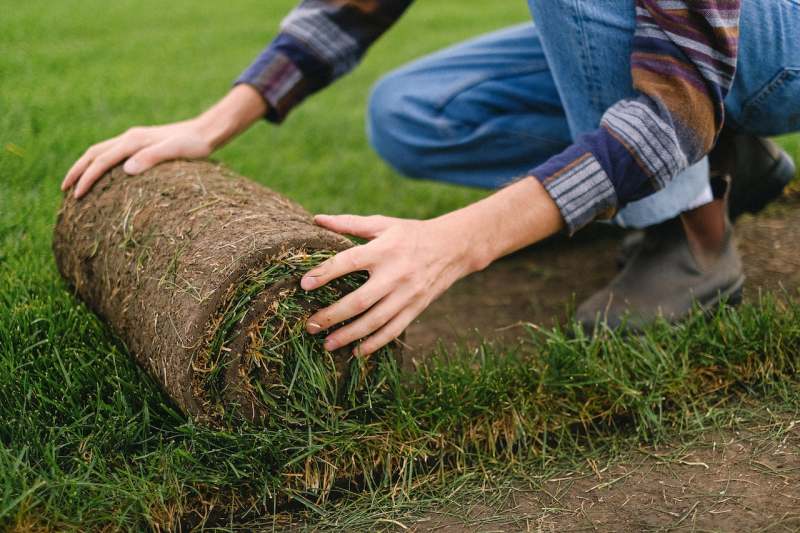
Sod installation tends to be pricier but provides an instant lawn. Here’s how much it costs to install sod:
| Cost per Square Foot (Installed by a Pro) | $1.65 |
| Cost per Square Foot (Sod Only) | $0.60 |
Factors Affecting Sod Installation Costs
- Type of sod: Different grass types have different costs. Specialty sods often come at a premium price.
- Yard size: Similar to hydroseeding, larger areas might reduce the cost per square foot but increase overall costs.
- Soil preparation: Sod requires a well-prepared base for successful installation, which can involve soil testing, leveling, and the addition of nutrients.
- Labor: The physical labor involved in laying sod is more intensive than spraying hydroseed, which can lead to higher labor costs.
- Additional features: Installing irrigation systems or landscape features alongside the sod can significantly increase the total investment.
FAQ About Hydroseeding vs. Sod
Sod acts quickly to control erosion because it covers the ground with fully grown grass that binds with the soil in 2-4 weeks. The hydroseeding slurry mixture also helps with erosion, but this method takes slightly longer than sod (4-6 weeks) to grow roots that help stabilize the soil.
Both hydroseeding and sod can be environmentally friendly, but hydroseeding might have the winning edge. Hydroseeding allows for the use of native grass seeds and has fewer emissions from transporting heavy rolls of sod. However, the ultimate environmental impact depends on factors like the choice of materials and ongoing lawn care practices.
Yes, both methods can be adapted to various soil types, but hydroseeding offers more flexibility, as the seed mix can be customized to better suit specific soil conditions and climates.
Choose Hydroseeding or Sod for a Healthy Lawn
Deciding between hydroseeding and sod for your lawn is an important choice that affects both the appearance and health of your outdoor space. Ultimately, the choice depends on factors like your budget, the size of your lawn, and what type of grass you want to plant.
To install a new lawn, contact a local landscaping service. Once it’s ready to mow, enlist the help of local lawn care professionals for routine mowing and maintenance. Their expertise can ensure your lawn remains healthy and vibrant throughout the year.
Main Image Credits:
Hydroseeding: Shutterstock
Sodding: ungvar / Adobe Stock Free / License